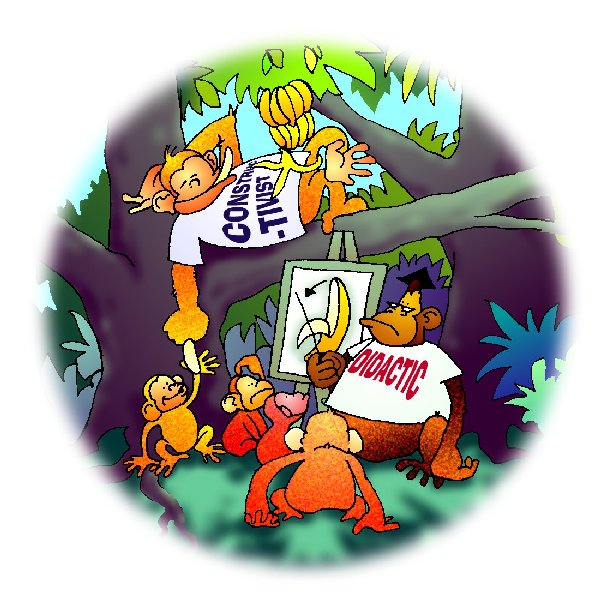Information Services: A Mission and a Vision
Through the development of a learning society the government wishes to build a version of UK plc which is a world leader in knowledge production. Higher Education must have learning at the top of its agenda and information services (IS) have a significant contribution to make in meeting this challenge.
IS refers to support provided through the concerted actions of the Library and Computer Centre or Service. This does not imply convergence, merger or integration, but it does mean that both units have to work in active partnership in supporting users. Many articles on Information Services begin by referring to the pressure for change, coming from the increased availability of C&IT systems, more students, greater student diversity, and a reduced unit of resource. It is important that Information Services management in such turbulent times clearly articulates a purpose and helps staff to see a ‘picture’ of the future and their place in it.
Many articles on Information Services begin by referring to the pressure for change, coming from the increased availability of C&IT systems, more students, greater student diversity, and a reduced unit of resource. It is important that Information Services management in such turbulent times clearly articulates a purpose and helps staff to see a ‘picture’ of the future and their place in it.
The development of a strategy around a clear purpose must be cognisant of both internal culture and the external environment. The internal culture of the institution will include the generic aspects mentioned above and other factors specific to individual universities. These factors include how individual universities view and manage their portfolio of activities. Some clearly identify themselves as research organisations, others as teaching ones, and more recently several have adopted an explicit focus on learning. The internal institutional culture must set the climate for Information Services strategy if it is to be acceptable in the institutional context. An institutional focus on learning provides a common thread between the activities of teaching, research, and scholarship. Information Services have a great deal to contribute to learning and can be at the centre of institutional learning strategy.
Imagine you have some minor ailment and visit the doctor, who gives a short general talk on the current state of ill health in society and concludes by informing all present that today’s remedy is paracetamol. It is unlikely that you would be happy with such treatment, which makes no specific diagnosis of your need. This is obviously not a good way to run a public health service. How strange that we have run, and often still run, an educational system that operates, at least partly, in this fashion i.e. administering the medicine to all patients regardless of whether they are ill or not, with no reference to their individual needs.
You may have heard it said that “teaching is one way of causing learning, but for many learners it is largely ineffective”. For some recipients of teaching it may be that the result is sound and useful learning, but we need to do other things as well if all students are to learn effectively. Apart from a few universities that operate a £35 million tutorial system the approach that higher education appears to take to learning is a didactic one. Learning, or knowledge acquired by study, does go on in universities: but it is teaching on which the structures and systems of universities focus. To suggest that there is any divide between learning and teaching is unhelpful and divisive. There is clearly some common ground between these two activities. The division is more an issue of perspective.
The business of universities is concerned with the activities of both teachers and learners. These activities include research: the systematic investigation into and study of materials, sources and so on, in order to establish facts and reach new conclusions. But establishing facts and reaching what are, for them, new conclusions is what all learners do, at the personal level, when they engage in study. Dearing commented on another HE activity, that of scholarship, which might be described as academic achievement or high level learning. By definition this is also a learning activity. The thread which runs through teaching, research, and scholarship is that of learning and study: the acquisition of information or knowledge, especially from books. My conclusion, therefore, is that learning, which encompasses research and scholarship, is the core business of a university.
Information, because it feeds knowledge and understanding, is more important than the technologies (communications and information technology (C&IT) post Dearing) which handle it. For information to have value it has to be transformed into knowledge. Universities have always been knowledge based organisations in a basic sense. There is now a new awareness of the importance and value of information, not confined to universities, and partly prompted by the work of JISC on Information Strategy. There is a new awareness in business in general that employee knowledge is the organisation’s primary asset, and this increases the status of those who know how to manage knowledge.
Almost every month there is a new report or government paper on some aspect of education. The Dearing and Kennedy reports, the Stevenson and Mckinsey reports and Connecting the Learning Society are just a few examples. Most of these publications have something to say about education in general, lifelong learning in particular, and the increasingly important impact of C&IT on education. What is clear is the intention to develop a nation of lifelong learners. The aspiration is a national culture where learners are individuals and the opportunity to learn is a right which is not time bound.
Dearing highlights the increasing importance of C&IT as a vehicle for learning and suggests that senior HE managers need a deep understanding of C&IT. Whilst C&IT is an important force in the development of learning and of institutions themselves, it must be acknowledged that we have made a mess of using C&IT. Information Technology has been used in education for over 20 years. It is arguable that most of the success has come from IT use in primary schools. It is no coincidence that the Microelectronics Programme Primary Project in the late 1980s was an education and human focused programme of staff development for trainers in the use of C&IT in the classroom. The human and pedagogical issues related to the use of C+IT in learning, and effective management for that matter, are more important than the technological diversions that HE has pursued over the past 10 years. The barrier to effective implementation of C&IT in the adoption of new approaches to learning and the effective use of C&IT in management is the lack of an appropriate human resource development strategy. This is a national issue affecting all phases of education.
IS skills and knowledge closely match institutional needs in the current climate. Despite concerns and fears about the future there exist some opportunities. Effective use of information technology presents an opportunity to improve the way any business is conducted, and in HE it affects the management of the business and the primary activity of learning. Information services contribute to institutional development through the activities of information management, information technology and learning support. At the intersections of these areas are the signposts to the most valuable skill blends for the future. Many IS staff have good skills as information managers and also as information technologists. However, staff who position themselves at the junctions of information management, C&IT, and most crucially learning development will be best placed to make the most significant future contribution. They will need an understanding of information based activities, including C&IT, combined with a knowledge of, and active involvement in, student learning.
Despite the evolution of mice, windows, and pointer systems computers still present a usability barrier to the novice. The hardware and software producers have failed users by continuing to mystify the operation of machines. Basic C&IT skilling is analogous to learning to form letters in early writing and should aim to provide a gateway to higher use of the technology for composition and editing just as letter formation provides the gateway to written composition. There is, however, a danger that access to computer systems dictated by a certain level of skilling becomes the end rather than the means. In an article entitled “Computer Delusion” Tod Oppenheim notes that “In a poll taken early last year teachers ranked computer skills and media technology as more “essential” than the study of European history, biology, chemistry, and physics; than dealing with social problems such as drugs and family breakdown; than learning practical job skills; and than reading modern American writers such as Steinbeck and Hemingway or classic ones such as Plato and Shakespeare”.
The parallel in the university information service seems to be the preoccupation with learning a particular version of word processing and then retraining when the next version is released. An analogy that springs to mind is stumbling around in the dark with a penlight torch. This enables the exploration of detail but does not help with the overview. Make sure that any C&IT training you undertake has all the lights on and that you can get to grips with the concepts rather than dive into the detail at the outset and never see the bigger picture.
The other end of the spectrum from the didactic approach mentioned earlier is a constructivist approach to learning. Constructivists believe that, through their activities, learners develop personal constructs relating to the world about them, including the information in that world as well as the physical entities. This constructivist view of education has its early roots in the work of Piaget ( 1979) and has been developed by Vygotsky (ed.Wertsch, 1985) to take account of learners’ current understanding in developing their conceptual frameworks.There is much current interest in constructivist approaches to learning, especially in relation to the effective deployment of C&IT in learning. In particular, research has focused on the examination of learners’ current understanding, or alternative constructs, as a way of appreciating the range of commonly held existing ideas and explanations of phenomena. By adapting to the learners’ current constructs the constructivist approach attempts to develop the learners’ understanding starting from where they are and intervening appropriately, rather than imposing a conceptual framework which is unconnected to current understanding. Awareness of where people are coming from and helping them develop their individual capacities are mainstream activities for IS staff who work closely with users. Clearly supporting learners does not mean telling learners: it means listening, questioning and guiding. These are all key skills possessed by many staff in information services.

The opportunity is for the information professional of today to be the learning professional of tomorrow and be involved in implementing and developing the core activity of the institution. Information, C&IT, and learning are vital areas of development. The challenge for the individual is to identify their purpose in relation to Information Services and institutional strategy, and choose an appropriate course of self development.
References
Oppenheim, T: Computer delusion in The Atlantic Monthly, July 1997
http://www.theatlantic.com/issues/97jul/computer.htm
Boden, M.A. (1979) Piaget. Fontana
Wertsch, J.V.(ed) (1965) Culture, communication and cognition: Vygotskian perspectives. CUP
Author details
Les Watson is Dean of Information Services at Cheltenham and Gloucester College of HE. He is a biologist by training and writes and reviews for the TES on IT and learning. His email address is les@chelt.ac.uk
